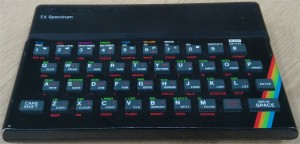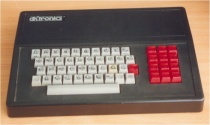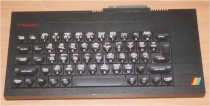Introduction
 Like a lot of people in the UK the humble sinclair spectrum 48K and its rubber keyboard where my introduction to the wonderful world of computers. I bought mine back in 1982 after a friend
bought one and extolled the virtues of being able to play fantastic games like attic attack and arguably the most famous manic miner.
Like a lot of people in the UK the humble sinclair spectrum 48K and its rubber keyboard where my introduction to the wonderful world of computers. I bought mine back in 1982 after a friend
bought one and extolled the virtues of being able to play fantastic games like attic attack and arguably the most famous manic miner.
The spectrum 48K was really the spearhead of household computers in the UK and it not only gave people a taste for playing games but most owners ended up dabbling in basic software programming and the more inquisitive in Z80 machine code. Such was the nature of the beast. It had a basic operating system built in and booted to a screen which allowed direct entry of basic so learning some basic was a prerequisite.
I did the usual of writing a few simple basic programs then advanced onto more complicated ones using arrays and machine code subroutines. My most succesful being a database written in basic, fully configurable with user definable fields and a complex search algorithm which called on a machine code subroutine (RND USER) to carry out a memory scan for any combination of letters. Another milestone in my programming career was coding a complete game in Z80, lightcycles. Anyone who has seen the film Tron will know how to play it. Anyway the game was written in Z80 from the ground up and in many instances in direct code which is a tribute to the ease of learning Z80 and its adaptability.
Hardware wise my spectrum grew from its basic state to encompass interface 1 and 2, allowing joysticks and microdrives to be attached. Anyone who remembers the frustration in getting some programs into the spectrum from its crude audio interface will appreciate the efficiency of the microdrive. A zx printer also came along allowing thermal print outs on special silver paper. And then yes, even a modem in the form of the VTX5000. This later device took my humble spectrum to the dizzy heights of prestel (think of it as an early UK based internet) and playing online in the viewdata world of big computers like the BBC and Apple.
Spectrum Service Data
For pictures of the Spectrum and its accessories please visit the
Spectrum Extras page.


